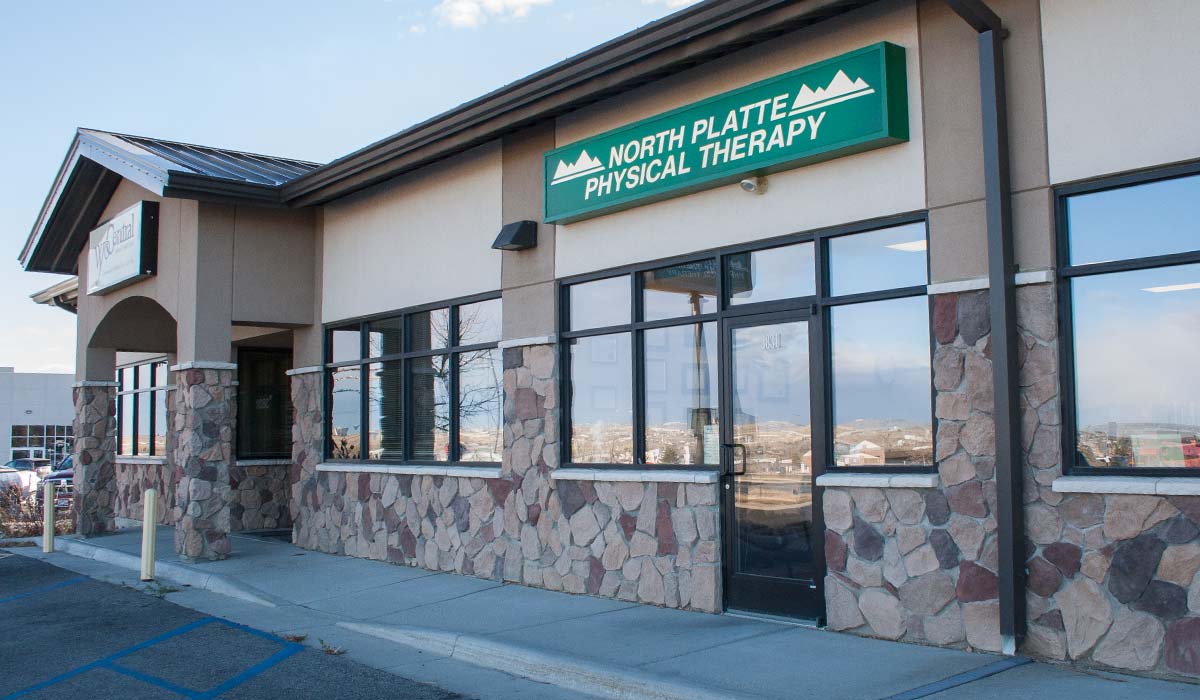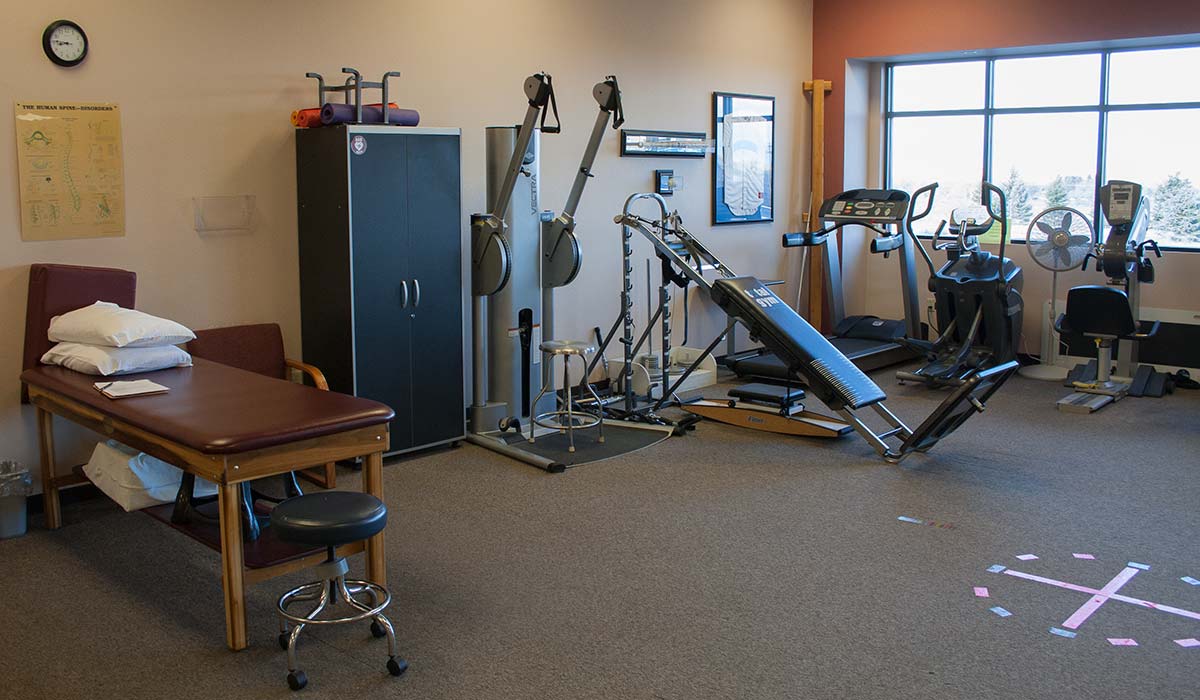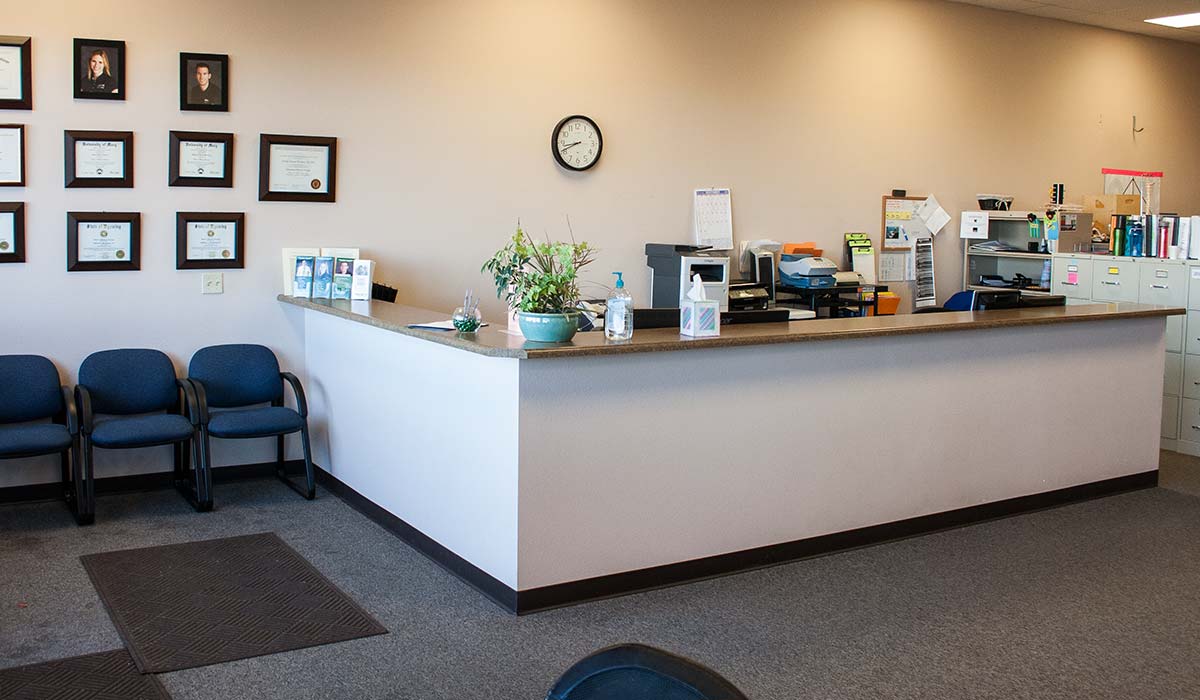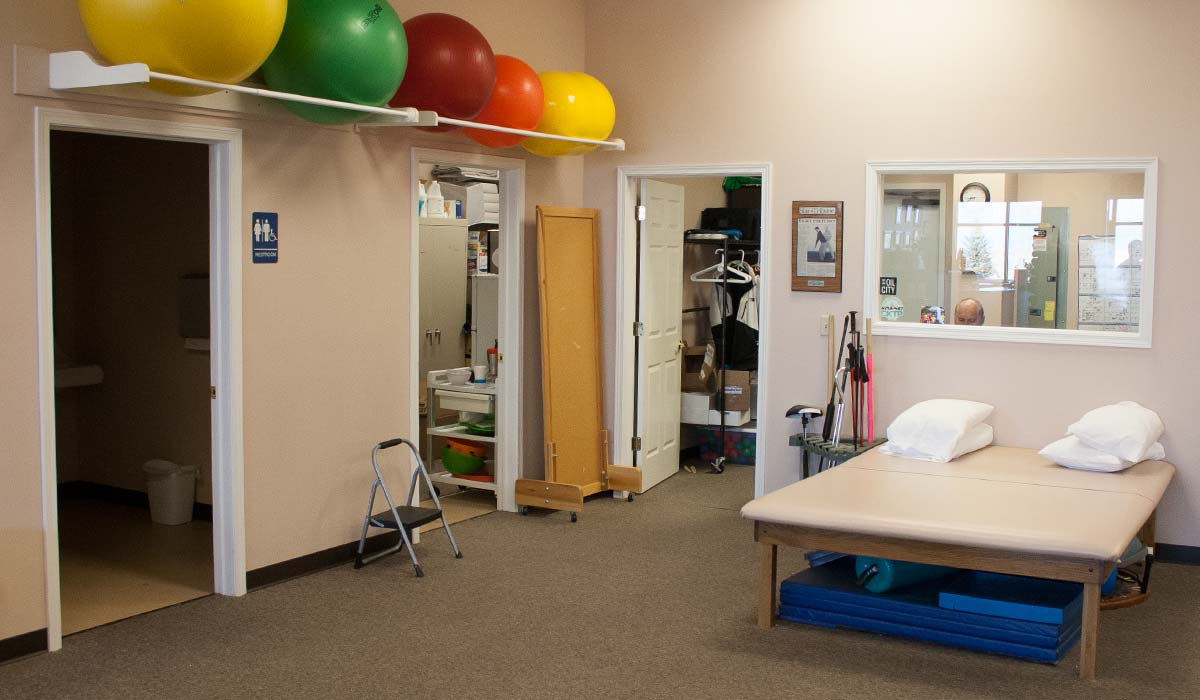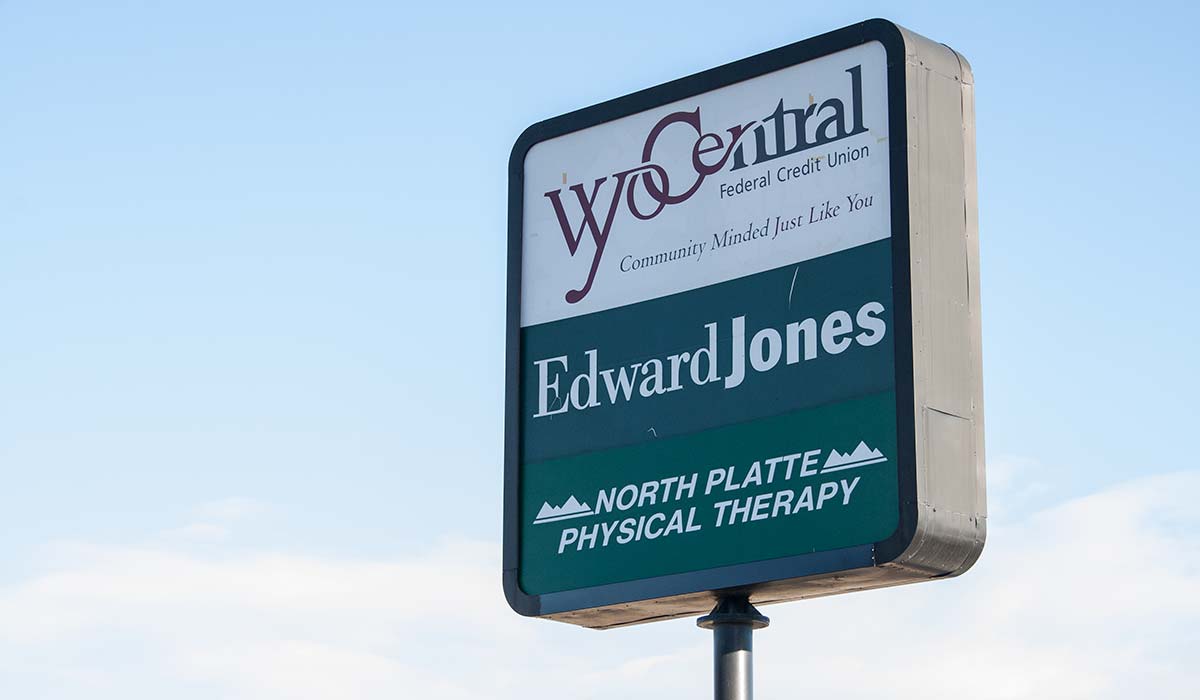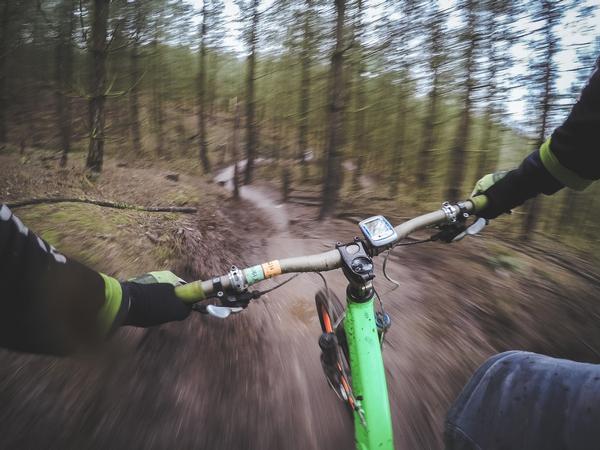North Platte Physical Therapy - Casper (West)
The Casper West clinic has been serving the needs of the surrounding community since 2010. This clinic along with our Casper East clinic continually strives to exceed the expectations of our patients. Our clinics are patient-focused and allow our patients to collaborate with their therapist on the optimal care for each individual. We provide this peak level of care in an energetic and enjoyable atmosphere.
We are dedicated to providing the best orthopedic care to central Wyoming. Our staff specializes in spine and extremities. We use multiple manual therapy and exercise treatment philosophies and techniques for treating back, muscle, joint, nerve and tendon disorders. North Platte Physical Therapy provides comprehensive physical and occupational therapy services to our orthopedic, pediatric, and geriatric patients. We have an excellent functional balance re-training program and fall prevention program. We also work with athletes and sports medicine patients.
Location Details
Address: 3831 Denis Drive #200, Casper, WY 82604
Hours: Mon - Fri 8AM - 5PM
Fax: 307-234-9074
Interested in scheduling at our East location? View Casper East Details
Services Offered
- Arthritis Pain
- Back Pain
- Back School Presentations
- Balance and Vestibular Rehab
- Biofeedback
- Biomechanical Gait Analysis
- Body Mechanics Training
- Chronic Pain
- Cupping Therapy
- Custom Foot Orthotics
- Custom Splinting
- Ergonomic and Worksite Evaluation
- Fine Motor Dexterity
- Golf Swing Analysis
- Graston Techniques
- Hand Therapy
- Headache
- Kinesio taping
- Modalities
- Myofacial Techniques
- Neck Pain
- Neurological Services
- Orthopdedic Clinical Specialist, OCS
- Orthopedic Service
- Pediatric Therapy
- Pool Therapy
- Post Cancer Treatment
- Pre/Post Surgical Rehab
- Return to sport exercise programs
- Running Injuries
- Self-care skills
- SFMA - Selective Functional Movement Assesment
- Spine Care
- Sports Medicine
- Stroke Rehabiliation
- Tendonitis
- TMJ
- Torticollis
- Trigger Point Dry Needling
- Vestibular Rehabiliation
- Women's Health
- Work Hardening/Conditioning
- Work Injuries
- Wound Care
Latest News & Info
Why Active Recovery Days Are the Best Way to Avoid Needing Physical Therapy Services
August 13, 2020
What Active Recovery Means
Active recovery means you’re giving your body a break from the strenuous workouts you do on your normal gym days, but instead of sitting all day, you’re getting up and moving. Think of an active recovery day as an ultra-light workout day. If you normally run, go for a long and leisurely walk. If you lifted weights the day before, run through some yoga or stretch and walk the tension out.Â
The Benefits of Active Recovery Days
Now that you understand what active recovery is, you’re likely wondering why it’s so important. After all, you deserve to be able to rest and take a day off after working out incredibly hard. While you’re certainly entitled to periods of rest, active recovery days have a few compelling benefits.
Keeps Your Muscles Loose
If you’ve ever worked out incredibly hard only to find that you’re stiff the next morning, you know that keeping your muscles loose is a challenge. Not only do stiff muscles increase the pain you feel throughout the day, but they also put you at risk for injury when you get back into your workout routine. Active recovery days emphasize movement, helping to keep your muscles loose and get rid of those feelings of stiffness that keep you from being able to work out as hard as you’d like later in the week.
Gives You Time to Focus on Form
Active recovery doesn’t have to mean taking a break from your exercise routine. It just means going at it with a lot less intensity. You can use this to your advantage and focus on form instead of how hard you’re pushing yourself. By paying attention to your form and building muscle memory when you’re not pushing yourself, you’ll be able to maintain that form later without as much effort.
It’s Fun and Relaxing
Believe it or not, active recovery days can be fun and relaxing. They’re the perfect opportunity to try new exercises and experience new things without having to worry about missing out on your workout. Just remember to keep things fun and don’t put pressure on yourself to perform to a certain level.
Keep Your Body Moving
Movement is the best medicine and is the easiest way to keep your muscles loose and healthy. If you ever end up dealing with an injury or are worried about a persistent ache that won’t go away, reach out and schedule an appointment with our team.Â
Â
How to Prevent Mountain Biking Injuries According to Wyoming Physical Therapy Experts
August 6, 2020
Check Your Bike Before You Ride
Running through a safety check before you hit the trail is the best way to keep yourself and other riders safe. Inspect your bike thoroughly prior to every ride. Make sure the nuts, bolts, and axels are properly mounted and tightened. Check your brake cables for tension and make sure the calipers or rotors can stop your wheel when you squeeze the lever. Look at your pedals and remove any debris that could keep your feet from sticking well. It’s also a good idea to check your wheels and make sure they’re in true. If they’re not, the wheels won’t roll straight and could end up clipping rocks and roots as you go.Â
Wear the Right Gear
Seeing mountain bikers zipping down trails without helmets or protective gear is, unfortunately, a common sight. Those riders risk serious injury if they fall or lose control of their bike on the trail. Instead of becoming another statistic, make sure you’re wearing the appropriate gear before you leave the trailhead. Invest in a good helmet and get it fit properly at your local bike shop. Wear gloves to maintain grip on your handlebars and consider knee and elbow pads to help reduce impact stress if you do fall. If you’re going all-out and riding technical trails and making steep downhill descents, invest in biking armor. This can dramatically reduce your risk of injury if you wipe out.
Warm Up Before You Leave
When your muscles are tight, they’re more prone to serious injury. Save yourself the risk by warming up before you hit the trail. Go for a short run or brisk walk to get the blood circulating and to loosen your muscles after the drive to the trailhead. Then, run through full-body stretches and make sure you’re comfortably loose. If anything feels tight or you notice strain from your previous ride acting up, consider taking it easy on the trail. Let your body be your guide. If it feels like you’re not up to a strenuous ride, don’t force it. When you force things, you’re more likely to hurt yourself.Â
Keep These Tips in Mind
If you’re planning on hitting the trail, keep these tips in mind and you’ll be able to reduce your risk of getting injured doing what you love most. If you do end up taking a bad spill or notice that you’re not performing the way you want, schedule a consultation as soon as possible. The sooner you do, the easier it will be to speed your recovery.
Â
Common Symptoms of Knee Trouble Wyoming Physical Therapy Providers Don’t Want You to Ignore
July 20, 2020
You’re Not Sleeping
As knee pain gets worse, you may find it difficult to get comfortable at night. This can impact the quality and amount of sleep you get every night. If you find yourself struggling to deal with your pain or keep waking up because your knee starts acting up, don’t wait. Get help from your Wyoming physical therapy team immediately.
You’re Changing Your Lifestyle
You should never have to modify your hobbies, activities, or lifestyle to accommodate knee pain. If you’re making concessions and missing out on doing the things you enjoy most, reach out for help. The best thing you can do is seek treatment. The sooner you can start working to find the underlying cause of your knee pain, the sooner you can get back to sleeping through the night.
The Joint Keeps Popping
Ordinarily, popping joints aren’t a huge issue. However, when it’s your knee that’s popping, it can be a sign of cartilage damage. The sooner you get your knee treated, the better off you’ll be. Leaving your knee to keep popping increases the risk of the cartilage damage getting worse. Once this happens, most people notice a dramatic increase in pain and mobility difficulties.
It’s Swelling Frequently
Swelling is the body’s response to injury. You don’t even have to feel severe pain for your body to respond this way. If your knee is swollen frequently, especially if you can’t explain what might be causing the swelling, it’s worth getting it checked out. There may be an underlying injury that needs treatment and leaving it to its own devices could end up doing permanent damage to your joint.
You’re Finding It Hard to Take Care of Chores
Bending, stooping, walking, and stretching are all part of daily life. If you’re finding it hard to take care of those normal tasks or are unable to complete those movements because of soreness or pain in your knee, don’t ignore it. Find out what’s going on so you can get your body back to moving normally.
Physical Therapy May Help
Your doctor will be able to tell you what’s going on with your knee, but once you have a diagnosis, follow up with their recommended treatment options. When your doctor recommends physical therapy, it’s because they know it can help you regain mobility and improve your quality of life. If you’re ready to schedule an appointment, don’t wait. Contact us today.Â
Â
